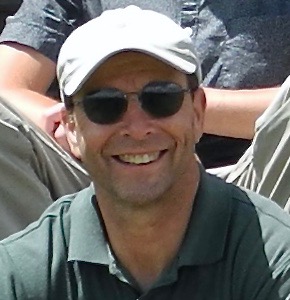Bio: 42 years working experience in historic preservation as a mason, woodcrafter, manager and trainer for the National Park Service. Descriptor: Reflections on White Grass Past and Present.
Blaise’s Story: It’s been more than 15 years since I first heard about White Grass Ranch and the vision to establish it as a National Park Training center for historic preservation. To this day, I cannot think of a better v enue for an historic preservation training center than this ranch, with its surviving cabins, landscape and amazing viewshed still intact. Back when I first saw it, there was no doubt much work would have to be accomplished to make this vision possible, but how appropriate to teach historic preservation in a setting whose very fabric would be restored.
enue for an historic preservation training center than this ranch, with its surviving cabins, landscape and amazing viewshed still intact. Back when I first saw it, there was no doubt much work would have to be accomplished to make this vision possible, but how appropriate to teach historic preservation in a setting whose very fabric would be restored.
Having spent 40 years in the National Park Service dedicated to preserving our nation’s heritage as reflected in the landscapes, structures and monuments, I cannot help but remain excited about the potential White Grass Ranch holds. Just standing amidst the cabins and open fields, here is a ranch that encapsulates those intrinsic values deeply rooted in our nation’s push to spread westward. Our heritage is more than presidents’ homes, military battlefields and granite monuments dedicated to famous individuals or events. It is also about the lesser known events. It is about risk, chance and people who believed a better life could be built. It is about Harold Hammond and George Bispham, the homesteaders who started White Grass, along with a generation of ranchers and cowboys who scratched out livings on land requiring sweat equity and hard work ethics. These risk takers are grassroots Americana. It is what we in the National Park Service strive to preserve. What better location than White Grass to pass on that preservation mission to our future NPS preservationists.
Today, standing on the front porch of the main cabin as a preservation instructor, I watch as the next generation of NPS stewards follow that same dirt road and walk the same footpath as Harold Hammond and George Tucker Bispham did some 100 years ago, I cannot help think that those 1913 homesteaders would nod in appreciation. The ranch continues its place in history. The skillsets learned today may not be one of ranching, wrangling or herding, but they are ones that ensure places like White Grass, and the values they represent, will be preserved by those now sitting within those restored cabin walls.

